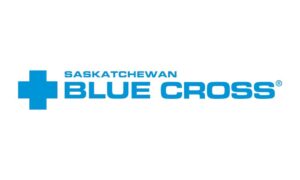GT Insurance: “Rusted out Torana” to digital upgrade

GT Insurance: “Rusted out Torana” to digital upgrade | Insurance Business Australia
Technology
GT Insurance: “Rusted out Torana” to digital upgrade
Stakeholders questioned high-risk strategy
Technology
By
Daniel Wood
“I think the words used at the time were, ‘How are you actually going to do this?’” said Tony Dodd (pictured above), CEO of GT Insurance, an underwriting agency specialising in transport coverages.
About two years ago Dodd pitched a plan: replace the firm’s entire digital infrastructure in one go. However, some management colleagues at GT and Allianz Australia, the agency’s major shareholder, were concerned at what they saw as a high risk strategy.
“But we were able to formulate a plan and bring it all together,” said Dodd. He said it took one to two months to allay concerns, including over potential disruption to the business and the security of IT assets during the upgrade.
The digital overhaul finished towards the end of last year and, according to the CEO, went very smoothly.
Ripping the band-aid off
Dodd successfully argued that while there were risks undertaking this substantial upgrade all in one go, there were also risks with a piecemeal approach of adding upgrades slowly.
“To rip the band-aid off and go in one foul swoop, while it appeared on the surface to be a significantly risky approach, the longer-term benefit of being able to move in a far more agile process made it worthwhile,” he said.
GT deals with more than 1,000 broking offices across Australia. A few years ago, suggested Dodd, it was clear their outdated technology was unable to perform to customers’ – and his firm’s – expectations.
The upgrade, he said, was about ensuring their platforms could use the best technology and provide the service customers expected.
The process involved improving the performance of IT systems, future proofing the business to take advantage of emerging artificial intelligence (AI) opportunities and ensuring upgrades were scalable. Transparency and security, he said, were also a top priority.
GT’s digital challenges
However, starting with the phones, the challenges were considerable. GT’s old phone system struggled to divert calls to mobiles, said Dodd, and customers calls could go unanswered.
The agency also had three separate IT service providers. A new agreement with Gratex International Australia, a business management software company, saw that firm designing and implementing the digital upgrade and also remaining as GT’s sole IT service firm.
“Bringing that [the IT system] back into one was going to give us some great benefits,” said Dodd.
Other parts of the IT system were fit for purpose but constrained by legacy systems.
“We had UPM, which is this great piece of software, housed in an old rusted out Torana that just couldn’t hold it and no matter how fast that engine ran, it was never going to move forward,” said Dodd.
Banking on Microsoft Azure
Gratex recommended standardising “everything” in the Microsoft Azure cloud, partly because GT already used a number of Microsoft applications.
“That would provide a reliable, highly available and scalable environment with one security umbrella which would integrate natively to all of the systems,” said Milan Neklapil, the firm’s executive chair.
Parallel environments without a big spend
Another reason GT chose Microsoft Azure, said Neklapi, was the capacity to build a “parallel environment” which would ally GT’s “major concern” about a digital upgrade disrupting the business.
“We could do a seamless switch to the new technology because Microsoft Azure allowed us to build a parallel environment to the production environment which was continuously updated with production data and continuously tested as it was built,” he said.
On the final weekend before the final switch over, Neklapi said they were operating the old and new systems in parallel. By this time, he said, the new system was “quite familiar” to GT’s staff and so the final switch-over didn’t cause any surprises.
“It was done just by refreshing the last bits of data,” said Neklapi.
He said, in the past, this sort of digital upgrade wouldn’t be possible without “a large capital outlay.”
“You would have to purchase the infrastructure to be able to build something in parallel to create this individual environment,” said Neklapi. “So the cost [in the GT case] was just the monthly cost of the resources in Azure, as a monthly fee.”
Performance pressure
Neklapi said his biggest challenge, apart from delivering on time and budget, was achieving a balance between system performance and cost. He said Microsoft Azure has the capacity to perform as much as the user wants – but that comes at a high price.
“We achieved that by designing the environment with a slightly higher spec than we actually needed,” said Neklapi. “Then we scaled back and cut back on some resources while measuring and observing the performance of the infrastructure, until we reach the optimum.”
By the end of the project, he said, they were able to bring it into line with GT’s original cost estimates.
Dodd said the versatility of the new system is a “great benefit.”
“We can wind down and wind up our performance on a cost basis,” he said. “We started off on a really strong program and once we worked out that it works really effectively we could start to wind it back to optimize our costs.”
Has your insurance company done a digital upgrade recently? Tell us how it went below
Related Stories
Keep up with the latest news and events
Join our mailing list, it’s free!






